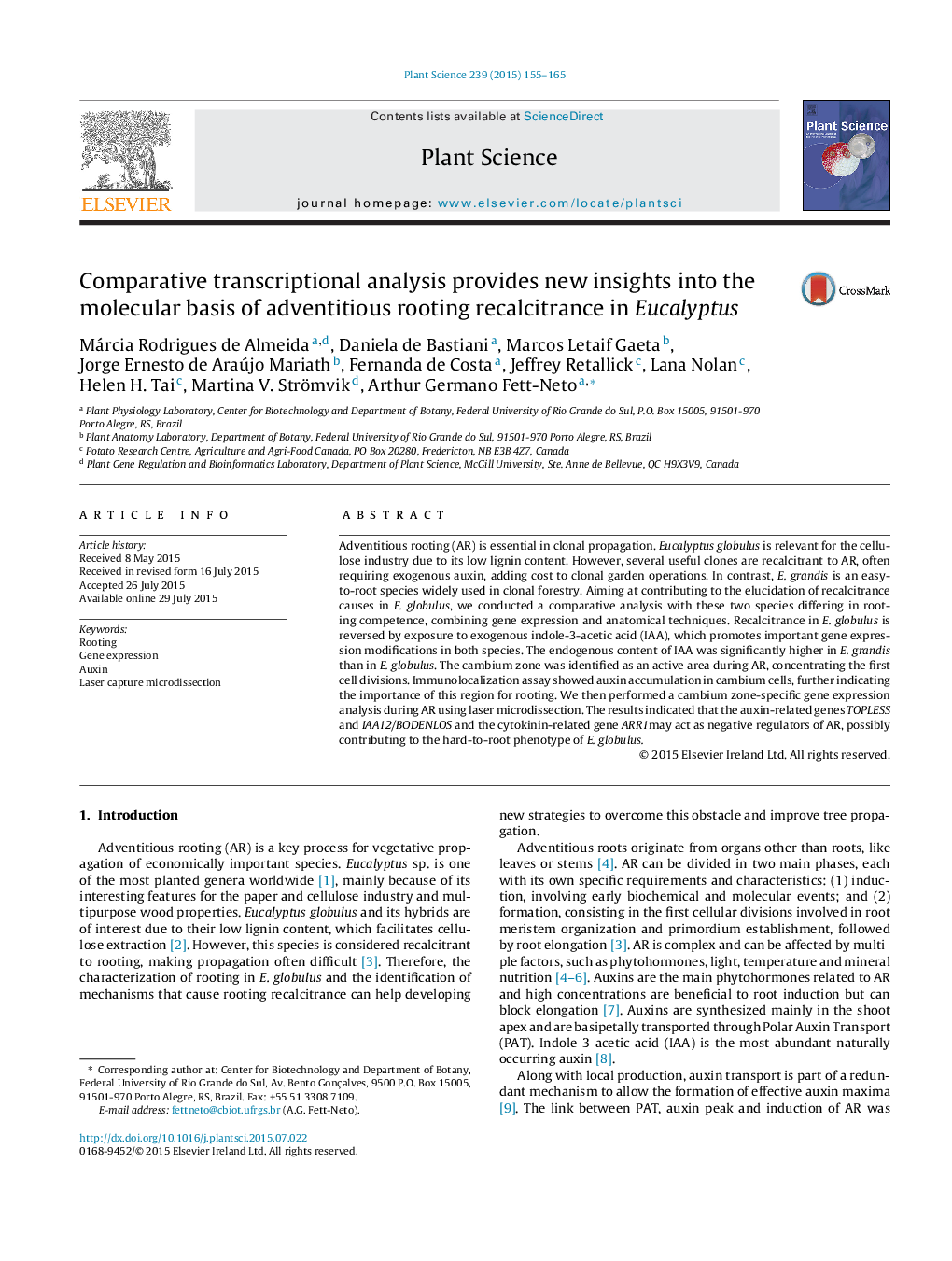| Article ID | Journal | Published Year | Pages | File Type |
|---|---|---|---|---|
| 2016991 | Plant Science | 2015 | 11 Pages |
•Auxin promotes different gene expression profiles in E. globulus and E. grandis.•Cambium zone undergoes early divisions during development of adventitious roots.•Cambium cells were selected by laser microdissection during rooting.•Genes putatively controlling adventitious rooting were analyzed in cambium cells.•TPL, IAA12 and ARR1 may act as negative regulators of rooting in Eucalyptus.
Adventitious rooting (AR) is essential in clonal propagation. Eucalyptus globulus is relevant for the cellulose industry due to its low lignin content. However, several useful clones are recalcitrant to AR, often requiring exogenous auxin, adding cost to clonal garden operations. In contrast, E. grandis is an easy-to-root species widely used in clonal forestry. Aiming at contributing to the elucidation of recalcitrance causes in E. globulus, we conducted a comparative analysis with these two species differing in rooting competence, combining gene expression and anatomical techniques. Recalcitrance in E. globulus is reversed by exposure to exogenous indole-3-acetic acid (IAA), which promotes important gene expression modifications in both species. The endogenous content of IAA was significantly higher in E. grandis than in E. globulus. The cambium zone was identified as an active area during AR, concentrating the first cell divisions. Immunolocalization assay showed auxin accumulation in cambium cells, further indicating the importance of this region for rooting. We then performed a cambium zone-specific gene expression analysis during AR using laser microdissection. The results indicated that the auxin-related genes TOPLESS and IAA12/BODENLOS and the cytokinin-related gene ARR1may act as negative regulators of AR, possibly contributing to the hard-to-root phenotype of E. globulus.
